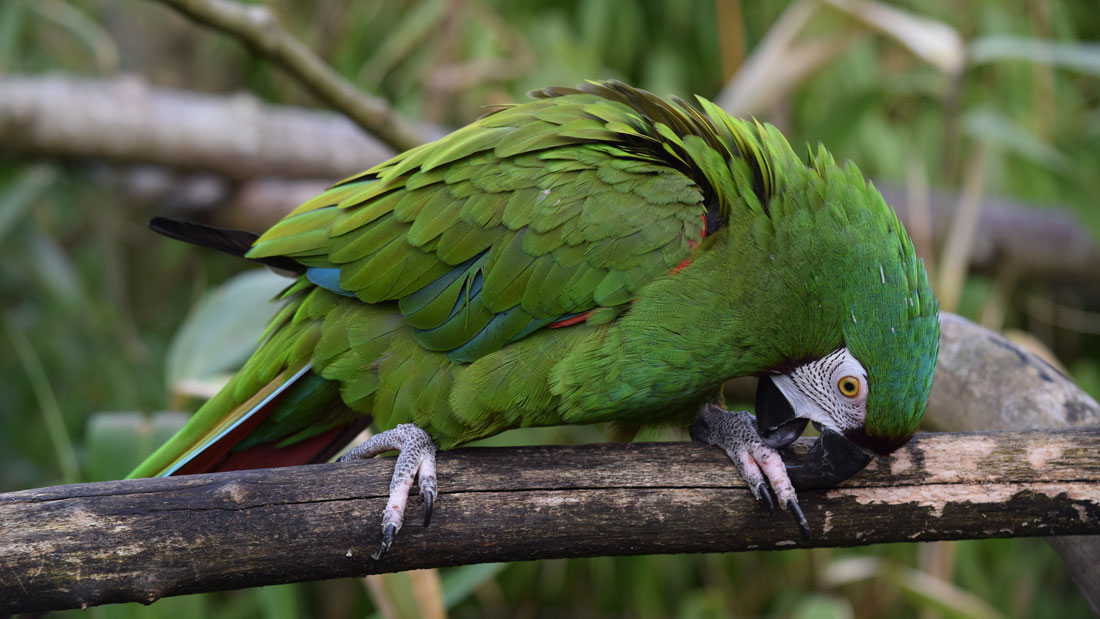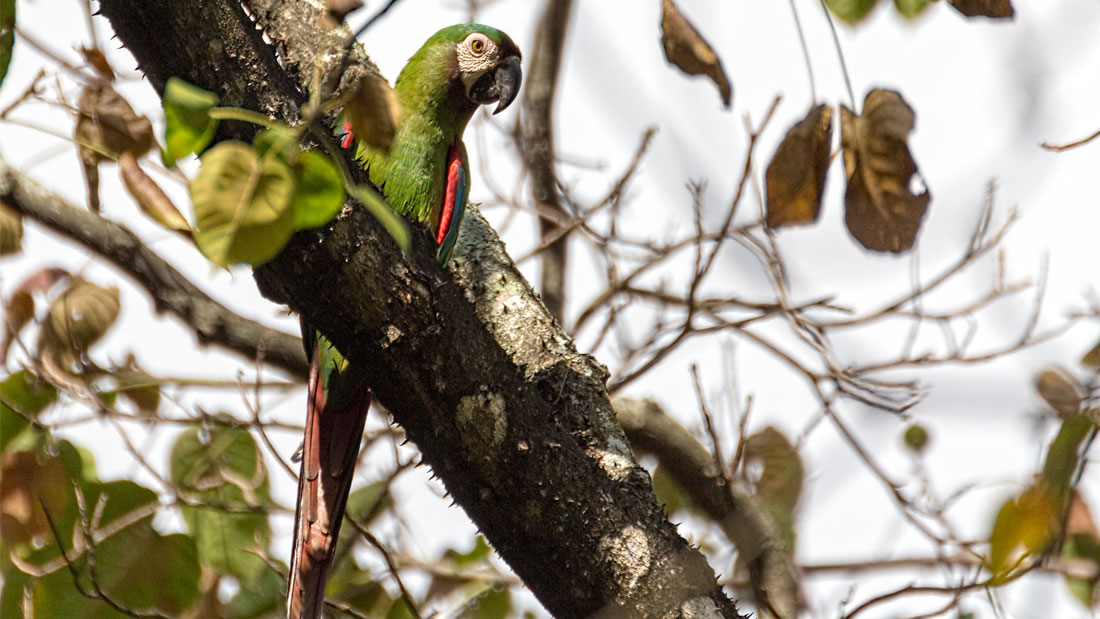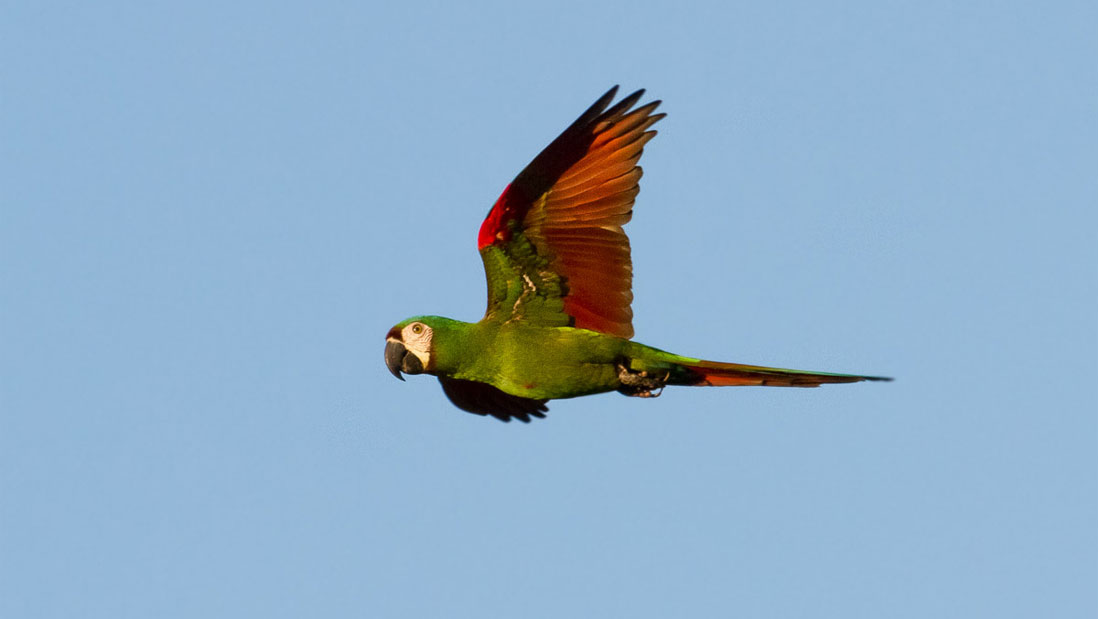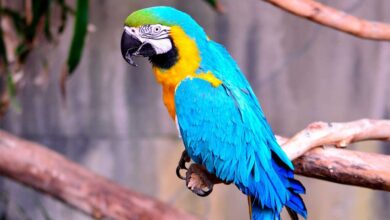Chestnut-fronted Macaw (A Beautiful Green Parrot)
Classification of Are (Chestnut-Fronted) Macaw
The scientific name of Chestnut-fronted macaw is Ara Severus. They are classified in the class Aves. Moreover, it is placed in the order ‘Psittaciformes,’ the family ‘Psittacidae’ and the phylum ‘Chordata.’
Table of Contents

- Class: Aves
- Phylum: Chordata
- Kingdom: Animalia
- Family: Psittacidae
- Genus: Cyanopsitta
- Order: Psittaciformes
- Species: A.severus
- Body length: 45 centimetres (18 inches)
- Weight: 340 grams
- Distribution: Resident of Panama, Colombia, Ecuador, eastern Peru and Bolivia east to Venezuela and Brazil.
- IUCN conservation status: Least concern
Origin
The severe macaw is distributed in southern Central America and northern South America. Particularly well-known in Panama and Bolivia. They are also found in Brazil, where they are known as the Brazilian green macaw. Their habitat is Woodland, Savannah, and forest.
The physical appearance of Severe Macaw
Severe macaws are shimmery green with dark, chestnut-coloured patches on the forehead and under the beaks. The crown of their head boasts a patch of scintillating blue feathers, and they bear distinctive red patches on the edges of their wings. The tail feathers are blue with red undersides, which shine when they are in flight.

Moreover, this species exhibits the classic bare macaw facial patch. They also have dark feather fine lines circling the eyes. Also, the bird’s beak and feet are gray and the iris of their eyes is resplendent yellow-gold. As Severe macaws are monomorphic, as a result, the males and females are identical.
The behaviour of Brazilian Green Macaw
Brazilian green macaw is social, friendly and is classified in mini macaws. These Severe (Chestnut-Fronted) Macaws (mini) are an intelligent plus, demands attention. But prove to be a typical macaw and can be cranky at times preferring only one person or gender. Surprisingly, a Severe Macaw can talk with clarity and most do pickup large vocabulary. Check out below video of 15-year-old severe macaw Talking.
How to recognize their situation through their behaviours?
When Severe macaws are:
- Screaming it means that you have ignored them.
- Quiet, give them your attention.
Never yell at the bird when it makes too much noise because it only makes the situation worse.
Gender
Through visual observation, their sex cannot be identified. The only reliable way of determining is through DNA testing or examination with an endoscope. The males tend to be more astronomically immense, have a voluminous skull, and are much more aggressive when breeding. This can be a denotement that you may have a male on your hands, but it’s not necessarily so.
Temperament
A hand raised chestnut fronted macaw is an inspiring bird, always having an affinity towards interacting with its owner. A trained macaw can sit on your shoulder, giving you the best company ever. Although they shout a lot, some of them are able to speak fluently.
Diet
Are severe macaws must have adequate nutrition to thrive. Feed them with a varied diet consisting of high-quality seed and pellet mix. The bird will also benefit daily offerings of fresh fruits and vegetables as in the wild they eat all kinds of foods.
Reproduction
The usual clutch consists of 2-3 eggs which incubate for about 26 days. The babies fledge from the nest after 3 months. Feed the parents with green stuff, corn-on-the-cob, carrots, and fruit laced with food supplements while they are taking care of the youngsters.
IUCN conservation status
The IUCN red-list declared Chestnut-fronted macaw as a stable population with the status of least concern.
Temperature
To provide suitable conditions to the Chestnut-fronted macaw, keep them in moderate temperatures.
Price
This macaw costs you around $699 to $899.
Health issues
- Psittacosis- parrot fever
- Feather picking
- Proventricular Dilatation Disease- is a condition that affects the nerves supplying the gastrointestinal tract of birds.
- Kidney Disease
- Constricted toe syndrome- the annular band of fibrous tissue forms at a joint of the digit, impeding circulation.
- Viral, bacterial and fungal infection
- Pancreatitis- pancreas becomes inflamed.
- Beak malformations- caused by contaminants, nutritional deficiencies, parasites, blunt trauma, or genetic abnormalities, etc.
Are Severe Macaw as Pets

According to the personality, these birds are fantastic and social at an early age. Coupled with this, any jewelry or shiny objects will quickly amaze this curious parrot so these things should be kept away from their reach.
Most Severe Macaws form monogamous bonds with their family and do not do well if kept isolated, even become neurotic if their mental needs are not met. Furthermore, gauge your bird to see what works best. These birds do enjoy being petted alongside the back of their necks, along with their beaks, or around their eyes.
Exercise
Severe macaws are for muscle power. In the wild, These macaws fly several hundred miles a day looking for food. Because of this, it is important to provide enough exercise for your pet to maintain a healthy body.
Pet severe macaws should be allowed a minimum of two to four hours playtime outside of their cage each day which allows the bird to stretch its muscles and exercise its wings and beak.
Housing
For the refreshment of macaw, provide a steel cage outside the house of 128 ft with some perches so that your macaw can completely expand its wings and move easily. For mental stimulation and enrichment, it requires some chewable toys.
Intriguing facts about Ara Severus

- It has got its name ‘severe’ because of its aggressive behavior.
- Severe macaws are the largest of the entire mini macaw family.
- These are the most affectionate species among macaws.
- We know them as Severe and Brazilian macaw.
- Severe-macaws are extremely loud.
- During the breeding season, both males and females partake in the raising of their young.
- These incredible creatures are a natural-talker.
- They are diurnal which means they sleep during the night and will wake up with the first sun rays every morning.
- The toes of macaws are “zygodactyl” which means they are designed to have a perfect grip to latch.
- Severe macaw also shares their food with their mates.
- The baby macaw is born without feathers and has closed eyes.
- Chestnut-fronted macaw and all species of macaws promote the growth of forests as they keep dropping seeds they eat.
Featured Image Courtesy: Flickr

